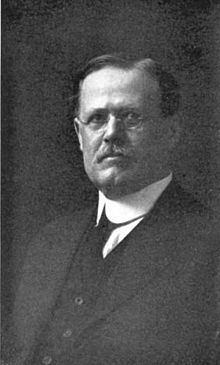Name John Coulter Role Botanist | Siblings Stanley Coulter | |
 | ||
People also search for Books A textbook of botany for colleg, North American Species o, Fundamentals of Plant‑breeding, Evolution - Heredity and Euge, Plant Genetics | ||
John Merle Coulter, Ph. D. (November 20, 1851 – December 23, 1928) was an American botanist and educator. In his career in education administration, Coulter is notable for serving as the president of Indiana University and Lake Forest College and the head of the Department of Botany at the University of Chicago.
Contents
- Early Life Education
- Career
- Memberships in scientific societies
- Survival of the sinking of The Republic
- Notable works
- As president of Indiana University
- References
Early Life & Education
John Merle Coulter was born in Ningpo, China to missionary parents Caroline Elvira Crowe and Moses Stanley Coulter. His brother was the botanist Stanley Coulter. He graduated from Hanover College in Indiana receiving the degree A.B. in 1870, A.M. in 1873, and Ph.D. in 1883. Indiana University conferred a pro merito Ph.D. to Coulter in 1884 while he was serving as Professor of Botany at Wabash College. He married Georgie M. Gaylord of Delphi, Indiana on January 1, 1874.
Career
John Merle Coulter held the following positions:
Memberships in scientific societies
In 1901, Coulter was the general secretary of the American Association for the Advancement of Science and in 1918 served as the Association's president. From 1897 to 1898, he was the president of the Botanical Society of America.
Survival of the sinking of The Republic
In 1909, Coulter and his wife, along with their children Grace and Merle, survived the sinking of the White Star liner Republic in which six were killed.
Notable works
John Merle Coulter's published works include:
In 1875, Coulter founded the Botanical Gazette and thereafter continued to be its editor.
As president of Indiana University
Coulter's student, Henry Chandler Cowles played a significant role in documenting the ecological importance of the Indiana Dunes. Many conservationists attempted to preserve parts of the Indiana Dunes.
